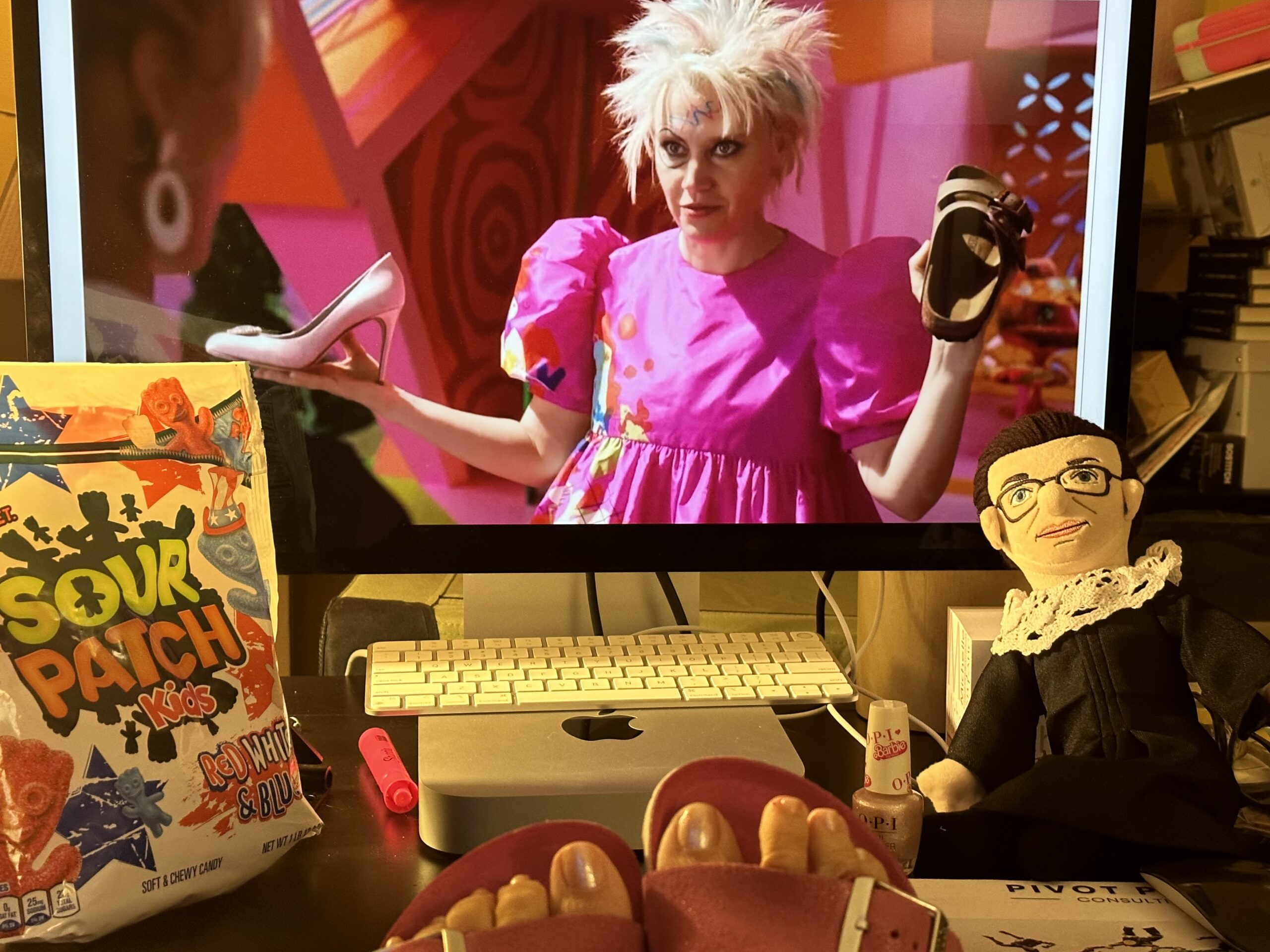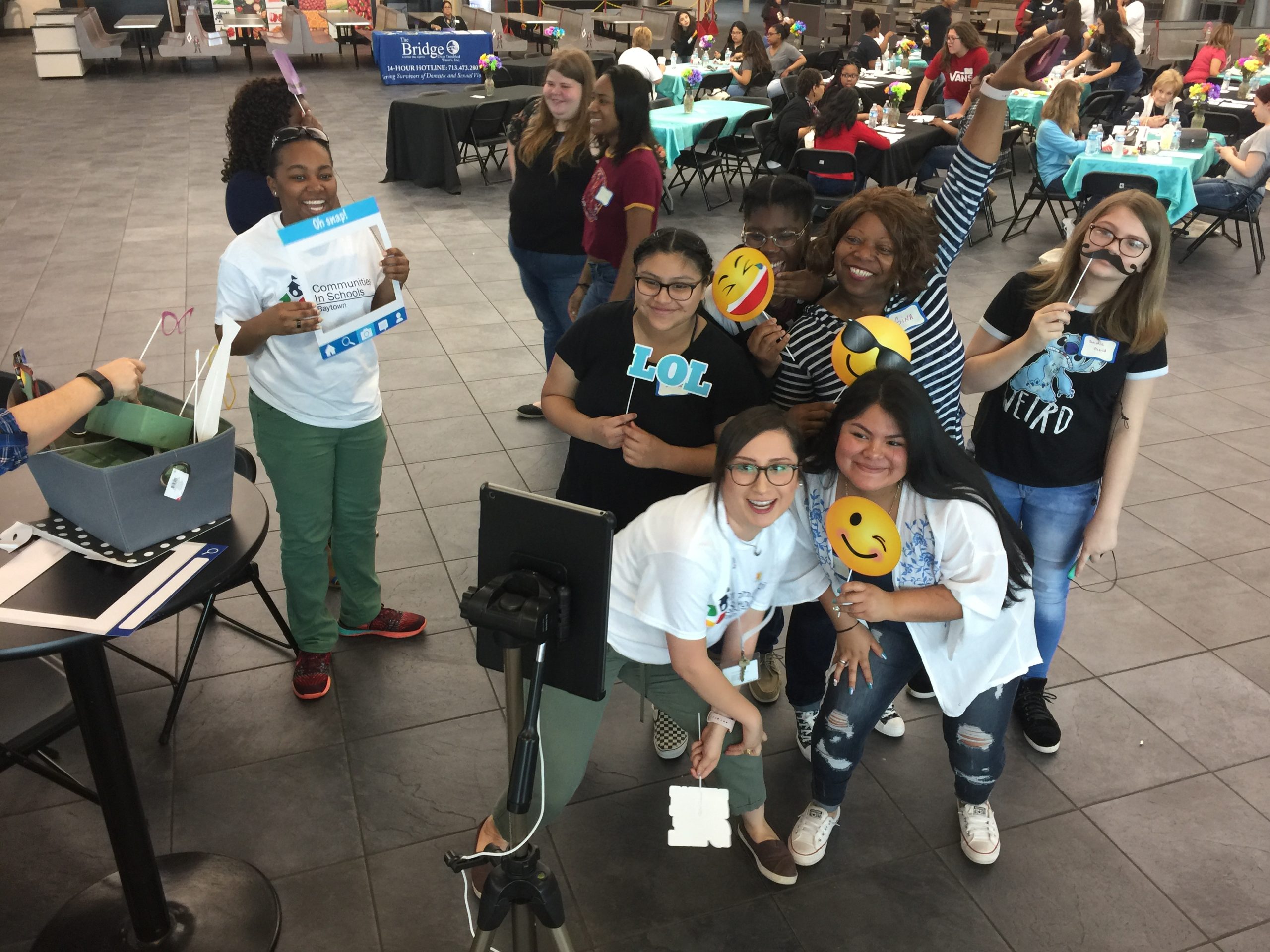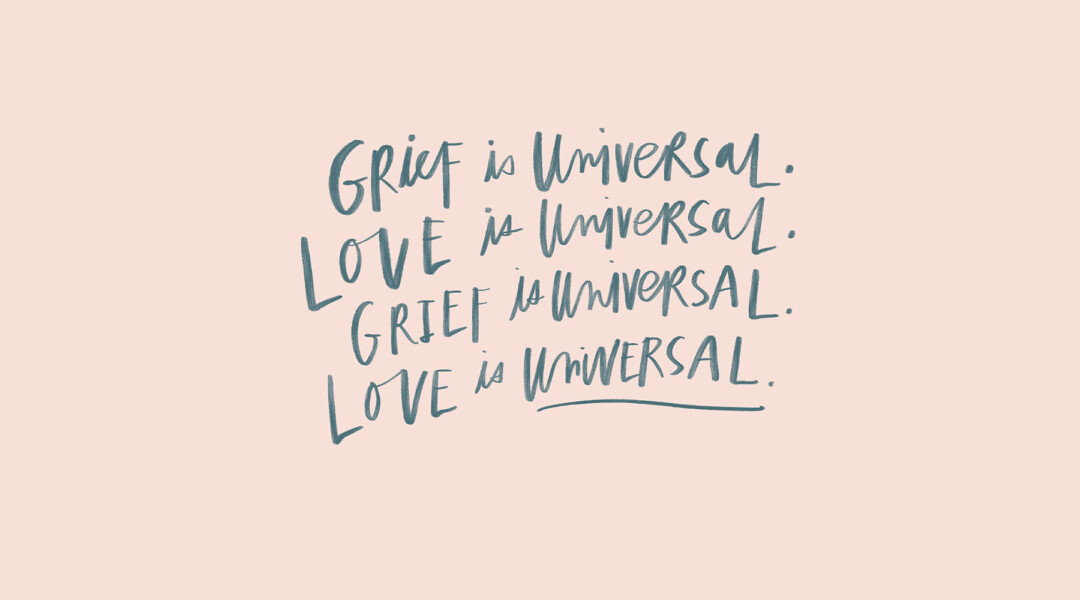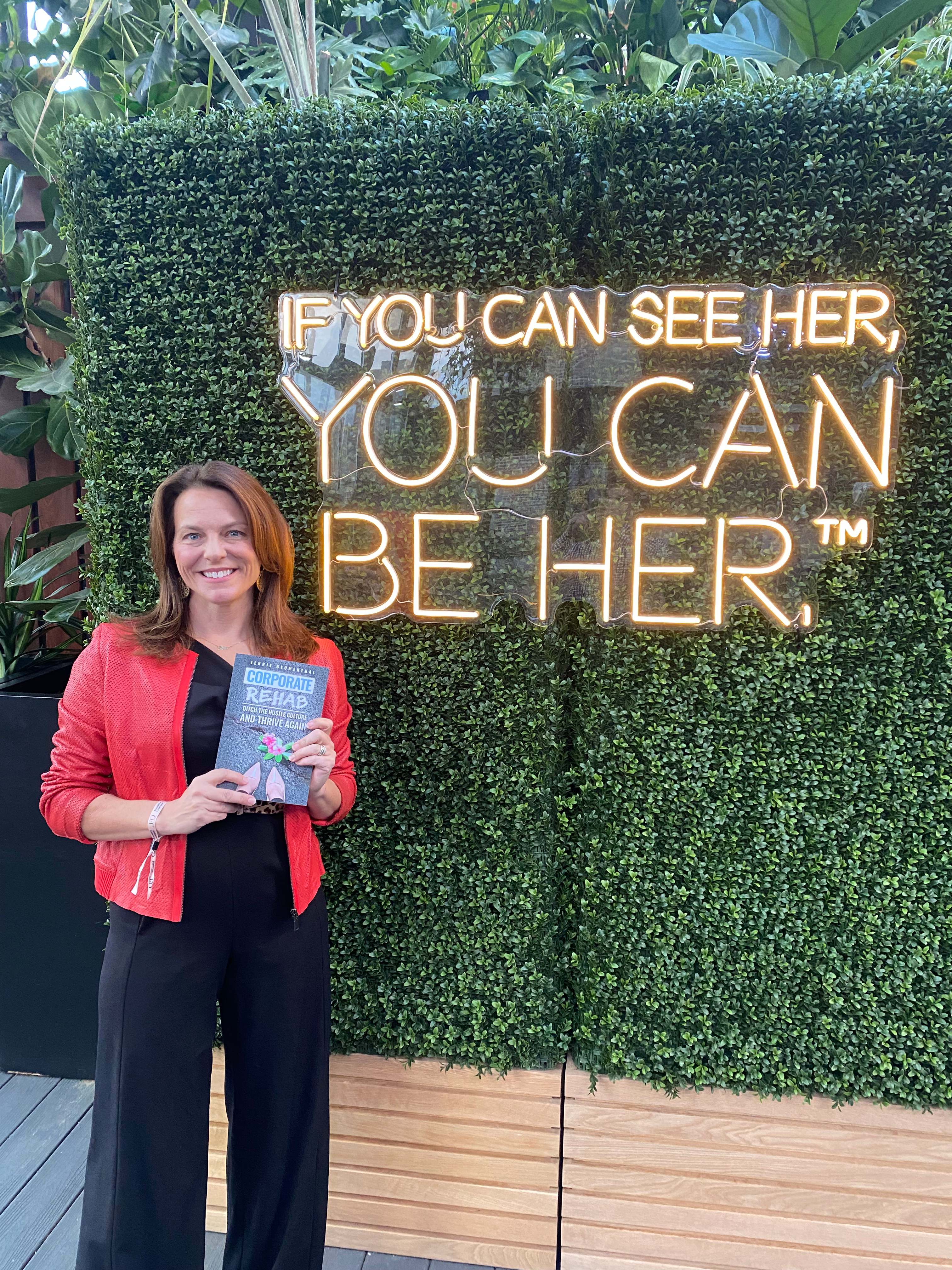I have seen the Barbie movie nine times. Yes, you read that correctly. I highly recommend seeing it in IMAX before it is out of theaters!
As a kid, I was never a Barbie doll “mega-fan.” I had Barbies. I liked Barbies. I did love my yellow Barbie camper. Other than that, Barbie was just a doll to me.
But the movie! It keeps drawing me back. It is funny and sad and clever and brilliant. It is a powerful commentary on patriarchy and female empowerment. But that is not the draw for me, and not really what the movie is about. It was something else that pulled me in again and again. So, like any well-educated adult with a thirst for knowledge, I kept watching the movie until I understood its hold on me. (Okay, I “might” also have watched it a few more times, even after that!)
Following the second time I saw it, I started searching for clothing in Barbie Pink, also known as hexadecimal color code #e0218a. Pink clothing? That is HUGE for someone whose wardrobe is 99% black – like every other woman who works or lives in Manhattan.
After my fourth viewing, I painted my nails in OPI, Barbie Limited Edition, “Best Day Ever.” I bought Barbie Pink Birkenstocks. I ditched my Louis Vuitton bag in favor of a tote in a color called “energy pink.”
As I transformed my wardrobe from black to pink, I realized it was not just my clothing style that was changing. I was mirroring the other transformations in my life that were starting to make me unrecognizable to myself. So, I asked, “Who is this person?” I wasn’t a full-time practicing lawyer anymore. I wasn’t a mom of little kids who were dependent on me anymore. I wasn’t a commuter to NYC who wore black every day anymore. Hell, I wasn’t even a woman who got her period regularly anymore! Cognitive dissonance was taking over my life at an alarming rate. My obsession with the movie grew.
One of the pivotal moments in the movie is when Weird Barbie gives Stereotypical Barbie a choice: go to the “real world” and face reality or remain in Barbieland, where nothing changes, and everything is perfect. Weird Barbie presents this choice to Stereotypical Barbie via footwear: (1) high heels, representing Barbieland, where everything is “pastels and plastics” and Stereotypical Barbie can live “her best day every day;” or (2) Birkenstocks, representing reality where not every day is “the best day ever,” where Stereotypical Barbie would “learn the truth about the universe” and where she needed to take responsibility for fixing “the rift in time-space continuum” that she helped create.
Here is the thing – – I think, in the end, the universe forces us all to pick Choice No. 2. None of us has “a best day every day.” I know I don’t. Not unlike “Depression Barbie,” I have had times where I have: (1) worn sweatpants all day and night; (2) binge-watched 19, mind-numbing, repetitive seasons of Love it or List It (on the nights when I could not sleep because my mind was too busy fabricating every worst-case scenario in my life) until I finally fell asleep, exhausted, at three a.m.; and (3) ate red, white and blue sour patch kids by the handful until I had to stop because the acidity was giving me sores in my mouth.
I knew something was going on with me. Maybe I was having yet another existential crisis. Or perhaps it was just how life was going to be from now on – “a midlife unravel,” as Brené Brown would call it: ongoing low-key anxiety and depression that is just enough to make you feel uncomfortable but not uncomfortable enough for anyone else to notice your suffering or prevent you from convincingly pretending life is perfect.
As an aside, that is not to say that because I felt uncomfortable, I regretted my choice to become an entrepreneur. I loved that I was doing something that mattered to me so much. My happiest moments during the last few months were when I avoided or solved a problem for one of my clients and knew it made a meaningful difference in her life. But, at the same time, I was scared shitless by the uncertainty of my new life. (Note to other 50-somethings: if you do not want to exponentially intensify your own midlife unraveling and sense of uncertainty, first-time entrepreneurship is not the right new career choice!)
Whether you call it a crisis or an unraveling or something else altogether, I once again felt like something was wrong with me, that I was the only person to ever experience these feelings, and that I was truly alone.
But enough about me and back to the movie.
Spoiler alert: Stereotypical Barbie chooses the high heel, the easy way to cope with her problem. Then Weird Barbie advises that the high heel was a fake option to give Stereotypical Barbie a false sense of control to make her feel better. Stereotypical Barbie must accept the Birkenstock, face reality, and save herself from cellulite. As for what happens next, you will just have to watch the movie yourself!
It was during my seventh viewing of the movie that it finally hit me why I kept going back to see the movie repeatedly: because its depiction of what it meant to be “human” so strongly resonated with me and normalized my feelings! I was Ken. And Barbie. And Gloria. All of us found human feelings “uncomfortable.” All of us were using coping mechanisms to try to make ourselves feel better: Ken by embracing patriarchy to hide how inadequate he felt in Barbieland and how Barbie had “failed” him; Barbie by completely shutting down because change was too “terrifying” and she thought she was not “pretty anymore” and “not good enough for anything;” and Gloria, by playing with Barbies to give herself a sense of control and feel good about herself in a world where “[i]t is literally impossible to be a woman” and where she is “just so tired of watching [herself] and every single other woman tie herself into knots so that people will like us.”
As for me, my coping mechanisms alternated between pretending things were perfect and being paralyzed with crippling anxiety. Like Ken, Barbie, and Gloria, I struggled to answer the ultimate question posed by the movie: “What was I made for?”
Which brings me back to where I started. By now, it should be obvious. I loved this movie because it normalized my own cognitive dissonance. Everyone faces this struggle. All humans feel conflicted and question their life’s purpose at some point. I was not alone. I was never alone. We are all in this together.
But it was not just that. The movie also made me realize that the key to feeling less overwhelmed had been dangling in front of me the whole time.
There is one line in the movie that summed it up for me. After coming up with a plan to rid Barbieland of patriarchy and take back control, Stereotypical Barbie says the following:
By giving voice to the cognitive dissonance of living under patriarchy, you robbed it of its power.
Once I really focused on that line of dialogue, all became clear: because I was not owning how I was feeling, my feelings were owning me. I was trying to gain control by desperately reaching for a high-heeled shoe when the universe was telling me that the Birkenstock was a much better fit. The key to lessening my feeling of uncertainty was to acknowledge it. To own it! To give it a “voice.”
So, I started doing just that. Feeling it. Owning it. Being proactive. Taking responsibility. And when I did so, I was the one with all the power – at least for a little while. To be clear, the cognitive dissonance, that disconnect between my beliefs and expectations from what I am experiencing, has not gone away. I still have days when I wake up to “bad breath” and a “burnt waffle” – wholly terrified of the unknown and questioning the meaning of life. Just like all humans do. On those days, I put on some pink, grab my Birkenstocks, and remember that by owning the fear, I rob fear of its power over me. I have figured out that owning my discomfort “does not diminish my powers; it expands them.”
And as it turns out, Barbie Pink, hexadecimal color code #e0218a – – and not black – is my color. It goes with everything. So, from now on, I will be wearing pink as I own and expand my power and continue to discover the many things that I was made for.





